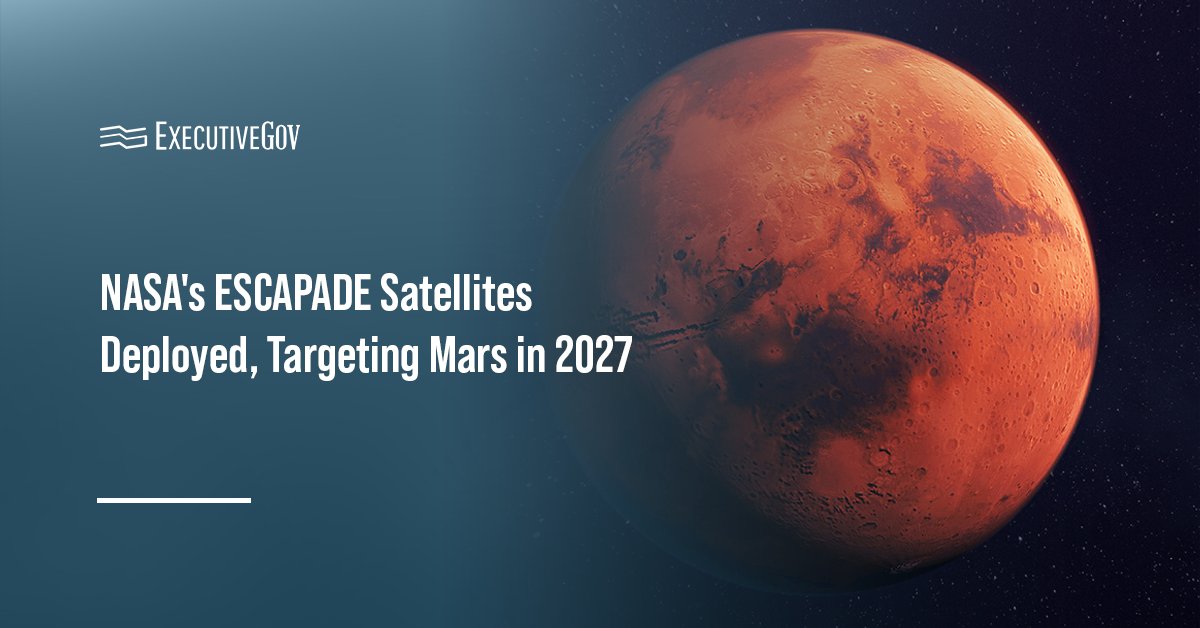NASA’s twin ESCAPADE spacecraft, designed by Rocket Lab, have deployed into orbit following their launch aboard Blue Origin’s New Glenn rocket, beginning the first coordinated two-spacecraft orbital science mission to Mars.
Table of Contents
What Happened During the Launch?
The mission lifted off on Nov. 13 from Space Launch Complex 36 at Cape Canaveral Space Force Station in Florida, NASA said Thursday. After stage separation, New Glenn’s first stage began its autonomous descent toward Blue Origin’s landing platform in the Atlantic Ocean, while the second stage’s BE-3U engines ignited to carry ESCAPADE, short for Escape and Plasma Acceleration and Dynamics Explorers, to medium Earth orbit.
NASA confirmed the payloads were released, marking the start of the mission’s yearlong Earth-proximity phase.
What Is ESCAPADE’s Flight Path to Mars?
During the Earth-proximity phase, the spacecraft will build the speed needed for a trans-Mars injection burn planned for November 2026. NASA said ESCAPADE will take advantage of the Oberth effect, increasing efficiency by firing the engines at higher speeds.
The satellites are expected to arrive at Mars in September 2027. They will enter a large capture orbit before NASA and its partner teams adjust and synchronize their trajectories for a science mission scheduled to begin in spring 2028.
What Will the Mission Study?
Using coordinated measurements from different points around the planet, the two ESCAPADE orbiters will investigate how Mars’ magnetosphere responds to solar activity and how energy and particles move around the planet. NASA said the findings will help improve understanding of environmental conditions relevant to future robotic and human missions.
Who Is Involved in the Mission?
The ESCAPADE mission is managed by the University of California, Berkeley’s Space Sciences Laboratory. NASA’s Goddard Space Flight Center, Embry-Riddle Aeronautical University, Advanced Space and Blue Origin serve as key partners.
Launch services were provided under NASA’s Venture-class Acquisition of Dedicated and Rideshare contract, which supports lower-cost launch opportunities for science and technology missions.





